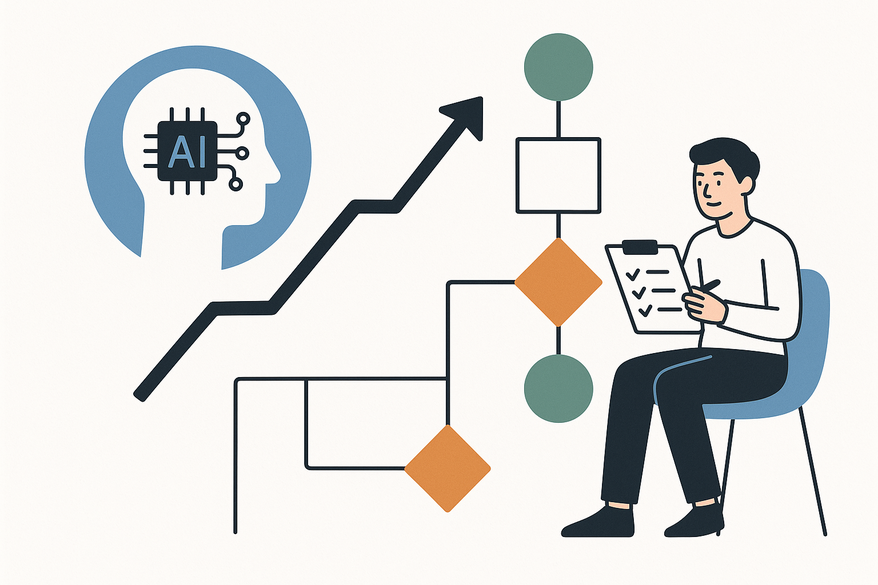Step-by-Step Guide to Follow AI Tips for Smarter Workflows
Boost efficiency by transforming AI advice into clear workflows. Follow this step-by-step guide to effectively implement and refine AI tips.

Estimated reading time: 7 minutes
Key Takeaways
- Structured AI tips streamline adoption and reduce wasted effort.
- A methodical approach aligns AI recommendations with business goals.
- Pilots with clear metrics drive early wins and ensure accountability.
- Ongoing refinement turns experimentation into institutional knowledge.
Table of Contents
- Why AI Tips Matter in Today’s Fast-Changing World
- Defining “AI Tips” and the Value of a Structured Guide
- Step 1 – Identify Trustworthy AI Tips and Sources
- Step 2 – Assess Relevance to Your Goals
- Step 3 – Implement Tips Effectively
- Step 4 – Troubleshoot and Refine Your Approach
- Practical Examples and Case Studies
- Key Takeaways and Additional Resources
- Conclusion and Call-to-Action
Why AI Tips Matter in Today’s Fast-Changing World
Targeted AI tips deliver shortcuts, best practices, and guardrails so teams can outpace competitors. Here’s why they matter:
- Maximize efficiency and innovation
Focused recommendations help you skip generic advice and apply proven tactics.
Faster time-to-value reduces wasted cycles and accelerates ROI.
“As technology evolves, targeted AI tips help maximize efficiency and innovation.” A guide to practical next steps for AI implementation - Outpace peers with expert best practices
Organizations integrating well-vetted AI strategies report higher adoption rates.
Structured tips help avoid common pitfalls in data quality, model bias, and rollout.
“Organizations integrating expert AI best practices outpace peers.” Successful AI implementation - Improve decision-making and reduce errors
Data-driven guidance sharpens forecasting and risk assessment.
Automation shortcuts free teams for strategic work, not busywork.
By following this step-by-step guide to follow AI tips, you’ll build smarter workflows that adapt as AI advances.
Defining “AI Tips” and the Value of a Structured Guide
AI tips are actionable recommendations from experts to optimize tools ethically and effectively. They include:
- Ethical guardrails: bias mitigation, privacy best practices
- Technical shortcuts: template scripts, pre-trained models, pipeline optimization
- Operational guidelines: rollout planning, training tactics, change management
A structured guide transforms scattered pointers into a coherent plan. Benefits include:
- Reduced overwhelm: clear tasks replace endless research
- Priority clarity: focus on tips with highest impact
- Continuous improvement: iterative feedback loops embed learning
“A structured guide ensures credible tips are evaluated, tested, and integrated.” Step-by-step guideline to make AI work for your business
With a step-by-step guide to follow AI tips, teams move from trial to triumph, building momentum at each phase.
Step 1 – Identify Trustworthy AI Tips and Sources
Not all AI advice is equal. Use these criteria to pinpoint reliable guidance:
- Industry bodies and expert hubs
Look for insights from IBM Think Insights, ITS America, or Ultra Consultants.
Peer-reviewed journal articles and conference papers carry weight. - Recent, transparent content
Prioritize material published within the last 12–18 months.
Seek documented methodology and data sources. - Real-world case studies
Validate tips with concrete examples: deployments, KPI improvements, lessons learned.
Find sample video demos showing end-to-end workflows. - Balanced analysis
Trusted sources outline both benefits and limitations.
Watch for undisclosed sponsorship or hype-driven claims.
Recommended sources:
By rigorously vetting sources, you’ll only apply trustworthy AI tips that deliver real impact.
Step 2 – Assess Relevance to Your Goals
Every tip must align with your objectives. Follow this framework:
- Define your goal
e.g., reduce customer response time, improve forecasting accuracy, automate routine tasks - Map tip to context
Does it fit your tools, data maturity, and team skills? Rate feasibility: budget, staffing, infrastructure needs. - Evaluate ROI and time-savings
Estimate resource investment vs. potential gains (hours saved, cost reduced). Prioritize tips with the highest projected return. - Account for constraints
Identify dependencies: data access, compliance requirements, integration complexity.
“Map tips against context and calculate ROI.” Successful AI implementation
“Consider organizational constraints.” Step-by-step guideline to make AI work for your business
By rigorously assessing AI tips for relevance, you avoid wasted effort and focus on high-value improvements.
Step 3 – Implement Tips Effectively
Effective implementation minimizes risk and maximizes learning:
- Start small with pilots or sandbox environments
Test each AI tip in isolation using sample data to validate models without disrupting operations. - Plan with precision
Define success metrics: accuracy lift, cost reduction, user satisfaction. Establish timelines and assign clear responsibilities. Schedule regular check-ins and progress reviews. - Provide training and support
Offer hands-on workshops and reference materials. Align IT, data science, and business teams on expectations. - Monitor with KPIs and feedback loops
Track key performance indicators continuously. Adapt based on user feedback and real-time metrics.
Resources:
By treating each tip as a mini-project, you build momentum, ensure accountability, and generate early wins.
Step 4 – Troubleshoot and Refine Your Approach
No pilot is perfect. Use data to pinpoint and fix issues:
- Analyze performance dashboards
Review usage stats, error rates, and time-to-completion against baseline metrics. - Gather stakeholder feedback
Conduct surveys or interviews with end users. Log recurring challenges for root-cause analysis. - Troubleshoot common roadblocks
Data quality issues: missing values, inconsistent formats.
Algorithmic bias: underrepresented groups, skewed training data.
Integration hiccups: API errors, security constraints.
A guide to practical next steps for AI implementation
Step-by-step guideline to make AI work for your business - Iterate rapidly
Tweak model parameters, retrain on corrected datasets. Update workflows and retrain users on revised processes. Scale successful pilots to other teams once stable.
Continuous refinement turns isolated tips into institutional knowledge.
Practical Examples and Case Studies
- Transportation Company
Ten-point AI rollout starting with leadership alignment for traffic management using real-time sensor data. Outcome: 15% reduction in congestion and improved commuter safety. A guide to practical next steps for AI implementation - Mid-Size Business Customer Service
Identified slow response times as a bottleneck and piloted an AI chatbot in a sandbox. Outcome: 40% faster replies and a 20-point boost in customer satisfaction. Step-by-step guideline to make AI work for your business
These examples underscore how a methodical process drives measurable impact.
Key Takeaways and Additional Resources
- Identify trustworthy AI tips from credible sources.
- Assess relevance against your goals and constraints.
- Implement via pilot projects with clear metrics.
- Troubleshoot, refine, and scale successes.
Further reading and hands-on tutorials:
- A guide to practical next steps for AI implementation
- YouTube walkthrough: step-by-step guide to implementing AI solutions
- IBM AI implementation insights
- Coursera & Udacity AI Foundations and project-based courses
Applying this step-by-step guide to follow AI tips transforms scattered advice into a clear roadmap. You’ll spot reliable insights, align them to your goals, run low-risk pilots, and refine for lasting gains.
Share your experiences and questions in the comments below to build a community of smarter AI adopters—one structured tip at a time.
For an example of structured AI tips in action beyond the enterprise, check out how Makeup Check AI guides users through optimized beauty workflows with clear, practical recommendations.
FAQ
- What are AI tips?
AI tips are actionable recommendations from experts designed to help you use AI tools ethically and effectively. - How do I find trustworthy AI tips?
Focus on recent, transparent content from reputable industry bodies, peer-reviewed research, and real-world case studies. - How long until I see results?
Results vary by pilot size and complexity, but small-scale tests often yield insights within weeks. - Can I customize these tips for different teams?
Yes. Tailor each recommendation to your tools, data maturity, and organizational goals. - How do I scale successful pilots?
Document lessons learned, iteratively improve your process, and apply the refined approach to other teams or use cases.




